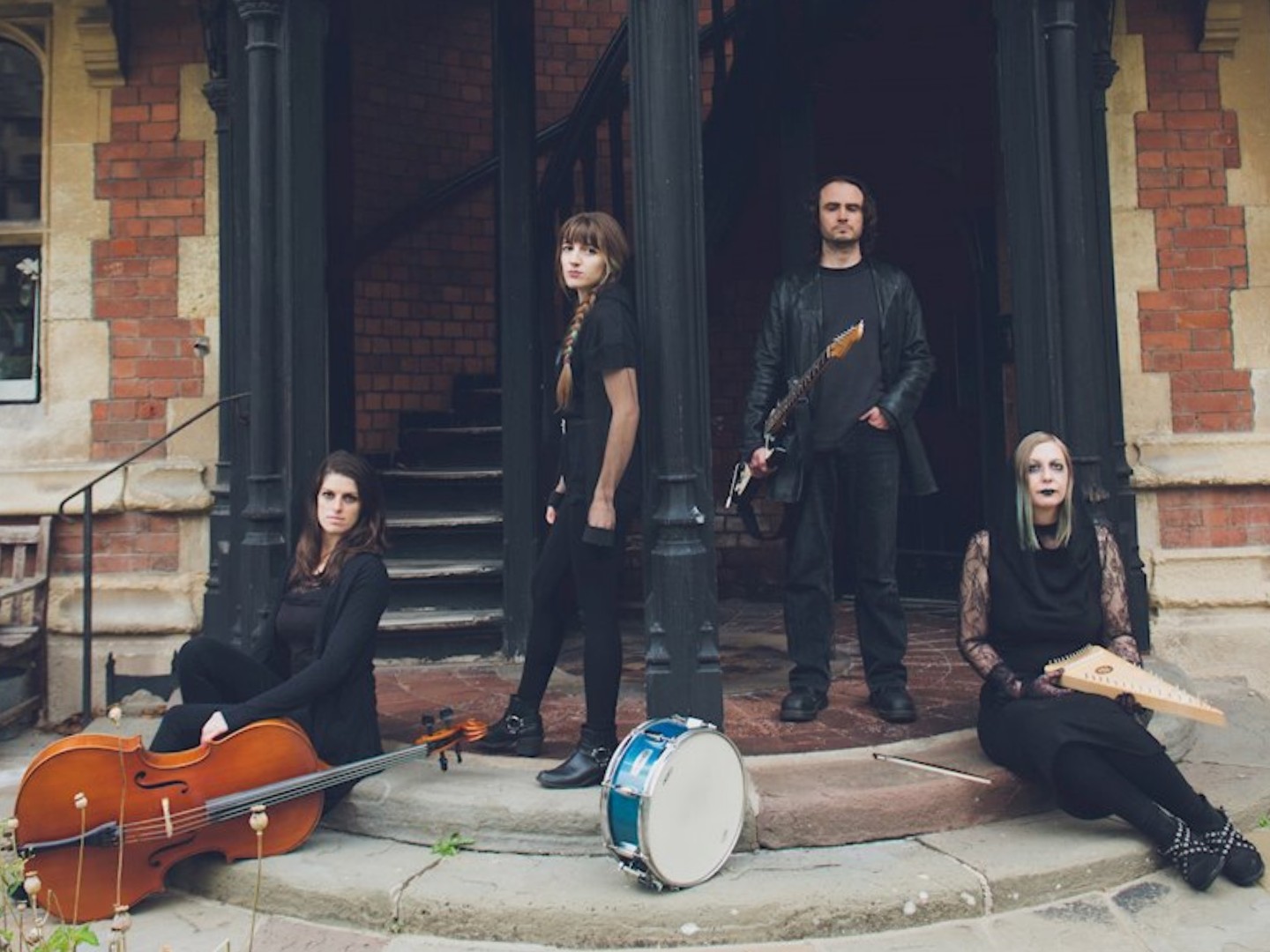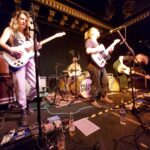Dead Space Chamber Music present their second album, The Black Hours, tomorrow (3rd December 2021) on CD, digital and vinyl. Today we are debuting the entire record before release.
Dead Space Chamber Music are a dark-neoclassical group from Bristol. They reinterpret historical material focussing on the medieval and Renaissance periods, taking forms and melodies that are hundreds of years old and shapeshifting them into new and varied contemporary works. Drawing on many musical approaches along the way, they richly incorporate elements and atmospheres of dark medieval, neofolk, ritual ambient, and doom in their avant-garde music.
The Black Hours, the second studio album by Dead Space Chamber Music, digs deep into the unsettling and disorienting experiences of the last year or so, confronting and embodying many emotions — from boldly visceral to achingly tender, with a very human thread running through the whole work. The songs themselves show the breadth of the group’s scope in terms of influences and approaches — material that is hundreds of years old being brought to (new) life, with soul-stirring and tender melodies rising to dramatic doom-laden highs via avant-garde and experimental techniques.
The album is a collection of 7 interlinked songs, each heralded by the tolling of a bell to mark the ‘hour’. They were created sequentially: the first song was created pre-lockdown, the last song was created post-lockdown, and the 5 in between were recorded in August 2020 at The Premises Studios, London, by the ‘fifth member’, Tom Berry, who recorded their OEIRA EP while still a student in 2018 and who they have worked with ever since.
The way that the album carried the band through the strange journey of the pandemic resonates with the theme and visuals of the album. The entire record is a reference to a medieval illuminated manuscript of the same name, a unique and intimate book of prayers to mark The Liturgy of the Hours, or The Office of the Dead — with prayers to mark the hours from morning to evening and all through the night. Created between 1460 and 1475, The Black Hours is hand-scribed on black vellum with real gold, silver, and at the time more valuable than either of these — turquoise pigment.
They talk us through the record track by track:
1. “Liement Me Deport”:
A reinterpretation of a medieval song in virelai form by Guillaume de Machaut (1300-1377). The groups original version features as an instrumental outro of the track Je Vivroie Liement / Liement Me Deport on their debut self-titled album. So this, the 2nd studio album, picks up as a variation of where the first album left off.
2. “Bryd one Brere (Bird on a Briar)”:
The earliest surviving English love song with lyrics in middle english, dated c. 1290–1320.
3 & 5. “Ion parts I and II”:
An avant-garde improvisation inspired by musique concrète, and the sound-worlds of experimental 20th century composers Edgard Varèse and György Ligeti
4. “Mari Lwyd / Morfa’r Frenhines (Grey Mare / Queens Marsh)”:
This piece
combines two traditional melodies:
“Mari Lwyd”: a Welsh wassailing tradition, sung door to door around Christmas and New Year. The singers, accompanied by the Mari Lwyd (‘grey mare’) — a hooded horse’s skull decorated with bells and ribbons — competitively ‘barter’ through the medium of song in order to be invited in and given warmth and provisions. Although mysterious in origin, the Mari Lwyd tradition has been revived as an annual opportunity to welcome the ancient into the home and community.
“Morfa’r Frenhines”:
“Queens Marsh”, a traditional Welsh melody in waltz time, commonly played on the harp.
6. “The Pit / Dissolved in Ashes”:
The first section evolved from a live semi-improvised film soundtrack the group performed to The Pit (Edward Abraham, 1962), an adaptation of
Edgar Allan Poe’s “The Pit and the Pendulum”. The film’s original soundtrack was created by the Radiophonic Workshop, and the group wanted to evoke something of that analogue aesthetic, while also developing it with a very tactile and spatial sensory impact.
&
The second section, Dissolved in Ashes, has its roots in the Dies Irae (Day of Wrath) medieval Latin poem, the melody dates back to Gregorian chant, or older. It is best known from its use in the Roman Rite Requiem (Mass for the Dead or Funeral Mass).
7. “Douce Colombe Jolie”:
A reinterpretation of Douce Dame Jolie, another virelai by Guillaume de Machaut (1300-1377). The group replaced ‘Dame’ with ‘Colombe’ (dove), a symbol of grace and the holy spirit, associated with navigation, hope and the human soul.




